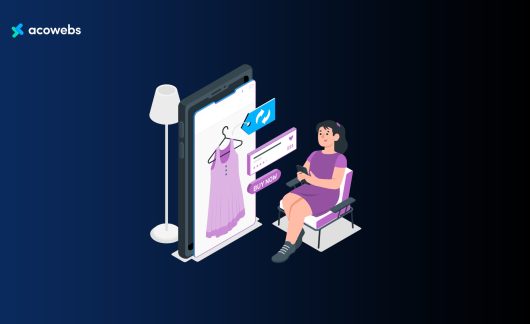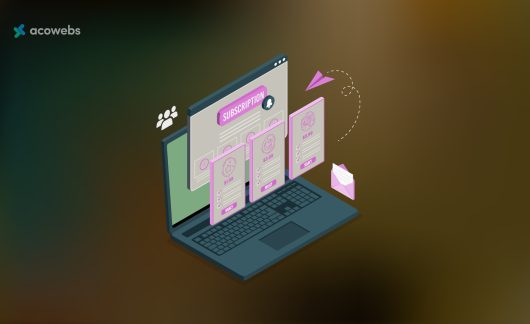As technology continues to advance at an unprecedented pace, so does the way we interact with it. One of the most exciting developments in recent years has been the emergence of extended reality (XR) technology.
This technology allows us to bridge the gap between the digital and physical worlds, creating immersive experiences that were once only possible in science fiction. In this article, we will explore what extended reality is, the different types of XR, how it is changing the world, and its potential applications in various industries.
What is XR (Extended Reality)?
Extended Reality (XR) is an umbrella term used to describe immersive technologies that blend the physical and digital worlds.
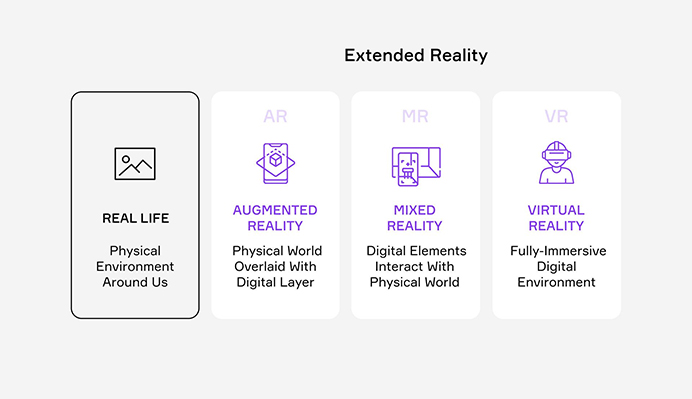
XR encompasses Virtual Reality (VR), Augmented Reality (AR), and Mixed Reality (MR). These technologies alter the user’s perception of reality, allowing them to interact with digital objects in a natural way.
XR is different from traditional 2D interfaces such as computer screens and mobile phones. Unlike traditional interfaces, XR allows users to enter a completely different world. This technology is rapidly advancing and is increasingly being used in various industries.
The technology creates a new reality by blending the physical world with the digital world. This is achieved by using various devices such as head-mounted displays, hand-held devices, and sensory feedback systems.
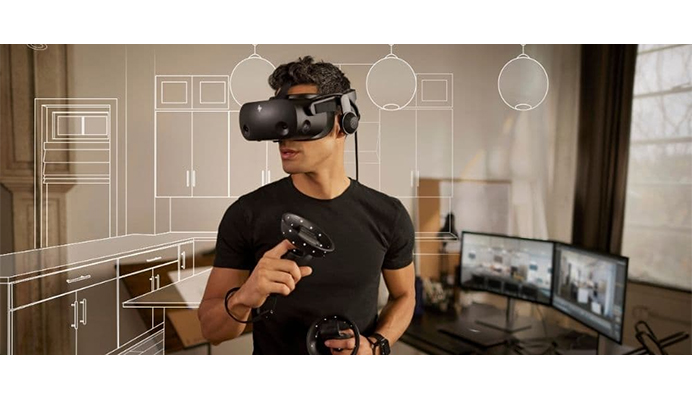
These devices allow users to interact with digital objects in the real world and vice versa.
Types of Extented Reality: Virtual Reality, Augmented Reality, Mixed Reality
Virtual Reality (VR)
Virtual Reality (VR) is a technology that immerses the user in a completely simulated environment. The user wears a head-mounted display that covers their eyes and ears, blocking out the real world.

The user can interact with the virtual world using hand-held controllers or sensory feedback systems.
VR is commonly used for gaming and entertainment, but it is also used in various industries such as education, healthcare, and real estate. VR is an excellent tool for training simulations, as it allows users to practice in a safe and controlled environment.
Augmented Reality (AR)
Augmented Reality (AR) is a technology that overlays digital content onto the real world. AR is commonly used in mobile applications that allow users to point their device at an object and receive information about it.
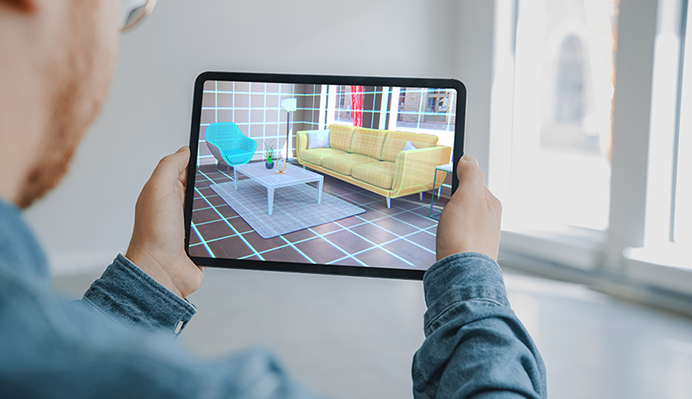
AR is also being used in various industries such as retail and tourism. AR can provide customers with a unique shopping experience by overlaying digital information onto physical products. AR can also be used in tourism to provide visitors with information about historical sites and landmarks.
Mixed Reality (MR)
Mixed Reality (MR) is a technology that creates an environment which blends real and virtual objects. MR allows users to interact with virtual objects in the real world and vice versa. MR is achieved using a head-mounted display that allows the user to see the real world while overlaying virtual objects onto it.

MR is commonly used in industries such as architecture and real estate as illustrated in the image above.
MR allows architects to visualize their designs in real-world settings, allowing them to make changes before construction begins. MR is also being used in real estate to provide virtual tours of properties to the clients.
The Evolution of XR Technology
Extended Reality (XR) technology has evolved significantly over the years, and this evolution can be traced back to the 1800s when Sir Charles Wheatstone introduced the concept of “stereopsis” or the perception of depth and dimensionality in two-dimensional images. The following are key milestones in the evolution of XR technology:
In the 1960s, Charles Wyckoff filed a patent for his silver-halide “XR” film, which was designed for photographing extremely bright light events, such as nuclear explosions.
From 2010 onwards, XR technologies began to gain momentum. Key highlights from this decade include the introduction of the Oculus Rift VR headset in 2012, the launch of Google Glass in 2013, and the release of the Microsoft HoloLens MR headset in 2016.
The COVID-19 pandemic also accelerated XR technology adoption in 2020, with the technology being used for remote collaboration, virtual events, and virtual training.
According to Statista, the global extended reality (XR) market, which comprises augmented reality (AR), virtual reality (VR), and mixed reality (MR), reached 29.26 billion U.S. dollars in 2022 and is expected to surpass 100 billion U.S. dollars by 2026, indicating continued growth with the advent of new products, innovation, and use cases.
Overall, XR technology has come a long way from its origins in the 1800s, and its potential applications and impact on various industries are expected to continue to grow in the future.
Advantages and Potential Applications of XR
Extended Reality (XR) technology has several advantages in various industries. Here are some of the benefits:
Improved Product Design and Development
XR technology enables engineers and designers to create virtual prototypes, reducing the need for physical prototyping and saving time and money. According to PwC, the use of XR for product development and services will lead to a $360 billion increase in GDP by 2030.
Additionally, XR allows companies to offer virtual product experiences to customers, enabling them to discover and try out products in a virtual environment, offering new approaches for companies to interact directly with customers remotely.
Enhanced Learning and Training
XR technology can benefit educators by providing a standardized way to teach foundational skills and knowledge while offering a more efficient way to teach. Students can repeat a lesson or task as many times as they need to in a virtual world without holding up the rest of the class.

Additionally, this technology can be used for hands-on training in fields such as healthcare, where it can simulate surgeries and other medical procedures.
Improved Workforce Efficiency
XR technology can help the deskless workforce perform their jobs more efficiently and safely, reducing the likelihood of human error. This is particularly important as the deskless workforce constitutes 80% of the global workforce, and 60% report a lack of satisfaction or a need for improvement in the technology they use.
Revolutionizing Healthcare
XR technology is transforming healthcare by reducing human error and improving patient outcomes. It allows healthcare professionals to simulate medical procedures, which leads to better training and preparation.

Additionally, it can provide more immersive experiences for patients to help manage pain and anxiety.
Increased Customer and Employee Engagement
XR technology allows organizations to conveniently deliver training to devices wirelessly, track key performance indicators, and capture training metrics. This makes employee training more enjoyable and engaging, resulting in better knowledge retention.
Additionally, XR technology enables companies to offer virtual product experiences to customers, enabling them to discover and try out products in a virtual environment, offering new approaches for companies to interact directly with customers remotely.
Potential XR Applications in Various Industries
XR is changing the world in various ways. It is being used in various industries to provide new and innovative solutions. Below are some of the industries where XR is making a significant impact.
XR in Entertainment and Gaming
XR is revolutionizing the entertainment and gaming industry. It is providing users with immersive experiences that were never possible before. VR is being used to create new gaming experiences, allowing players to enter completely new worlds.
AR is also being used in the gaming industry to create new experiences. Pokemon Go is a prime example of how AR can be used in gaming.

The game overlays digital Pokemon onto the real world, allowing players to catch them using their mobile devices.
XR in Education
XR is used in education to create an interactive learning experience by incorporating VR, AR, and MR Technologies. Unlike traditional methods, realistic simulations and interactive learning experiences can make teaching and learning complex subject matters effortless and engaging.
AR is also being used in education. AR can provide students with a unique learning experience by overlaying digital information onto physical objects with captivating graphics and interactive elements.
AR can also be used to provide students with virtual field trips, allowing them to explore places that they would not have been able to visit otherwise.
XR in Public Safety Training
VR is an excellent tool for training simulations. It allows users to practice in a safe and controlled environment. VR is used to train personnel in Public Safety, such as Police officers and Firefighters. They encounter dangerous situations where the lives of the officers and other people are at risk. Some unforeseen safety hazards or dangerous scenarios cannot be recreated or would be too dangerous for live training. VR training provides simulations of dangerous and unusual events so that the trainees can learn to handle the situation while remaining in a safe environment.
VR is also used to train professionals from various fields, such as Aviation, Engineering, and Military. In aviation, using VR, the pilots are given real-life flight simulations to practice flying and landing techniques in a safe environment.
XR in Healthcare
XR is also being used in healthcare. VR is being used to provide patients with immersive experiences that can help them cope with pain and anxiety. VR is also being used to provide medical professionals with training simulations.
AR is being used in surgery. Surgeons can use AR to overlay digital information onto the patient’s body, allowing them to see the internal organs and structures. This can help surgeons to perform surgeries with more precision.
XR in Retail and E-commerce
The retail and e-commerce industry is experiencing a transformation with the use of XR technologies.
AR is being used to create a unique shopping experience for customers by overlaying digital information onto physical products, allowing them to visualize how the product would look in their homes.
On the other hand, VR is being used to provide customers with virtual try-on experiences, enabling them to see how clothes would look on them before making a purchase. Leading brands such as Farfetch and Prada have partnered with Snapchat to introduce virtual try-ons.

With Farfetch, users can simply stand in front of their camera and use voice commands to try on products such as a windbreaker jacket with a pattern or a pair of black boots with a heel.
The software uses 3D Body Mesh technology to map the body and cloth simulations to create a realistic experience that responds to gravity. Customers can switch outfits using voice commands, share their images, and make purchases directly within Snapchat.
This innovative approach to shopping is revolutionizing the retail industry and changing the way customers shop for products.
XR in Real Estate and Architecture
XR is also being used in real estate and architecture. MR is being used to provide virtual tours of properties. This can save time and money for real estate agents and customers.
Architects are also using MR to visualize their designs in real-world settings. This can help them to make changes before construction begins, saving time and money.
XR in Tourism and Hospitality
XR technologies have revolutionized the way the tourism and hospitality industries operate. AR is being used to provide visitors with information about historical sites, landmarks, and virtual tours of museums and art galleries.
On the other hand, VR is being used to provide customers with virtual hotel tours, allowing them to explore hotel rooms before making a booking.
Moreover, XR is also being used to enhance the experience of visiting art galleries and museums. Old paintings often carry a lot of secrets about their meaning, history, and the artist. With VR technology, visitors can experience a unique way of understanding art better and maybe even unravel some of its mysteries.
For instance, the Louvre’s VR mobile app, “Mona Lisa: Beyond the Glass,” puts visitors into a virtual room with the woman DaVinci painted—Lisa Gherardini—as if she was alive right now.

The app combines all the known information about the painting, making the experience more engaging and informative for visitors.
XR in Sports and Fitness
XR is also making an impact in sports and fitness. VR is being used to provide athletes with immersive training experiences. Athletes can use VR to simulate game scenarios, allowing them to practice in a safe and controlled environment.
AR is being used in fitness to provide users with digital overlays that can help them to perform exercises with proper form. AR can also be used to provide users with real-time feedback on their workouts.
Challenges Facing XR Adoption
XR technology is a promising tool with many potential benefits, but its adoption still faces a number of significant challenges.
- One of the most significant challenges is cost. The high cost of developing and implementing XR technology can make it difficult for smaller companies to adopt it.
- Additionally, the lack of standardized development tools and platforms can make it challenging for developers to create XR experiences that work seamlessly across different devices and platforms.
- Other challenges facing XR adoption include legal concerns, user experience, commercial conflicts, generational challenges, security concerns, and issues related to the regulatory framework and social impact.
- Operationalization is also a challenge, including procurement, deployment, Application Lifecycle Management (ALM), and IT Service Management (ITSM).
- Other challenges may include issues related to content creation, user adoption and behavior change and the need for better standards and interoperability.
XR Development Tools and Platforms
XR Development, or the development of Extended Reality applications, involves the use of various tools and platforms to create immersive and interactive experiences for users.
Here are some resources that can help developers get started with XR development tools and platforms:
Coursera’s XR Development Course
This course provides a fundamental overview of XR development platforms and tools, with a focus on making the transition from 2D to 3D development. The course offers guidance on the creation of your first 3D scene using WebXR.
XR Community’s XR Resources
XR Community’s XR Resources provides a comprehensive list of resources for developing XR content using Unity or similar development tools. The page covers the basic components needed for development and where to find them.
Microsoft’s Mixed Reality Toolkit for Unity and Unreal
Microsoft’s Mixed Reality Toolkit for Unity and Unreal is a code-first development kit for creating cross-platform mixed reality experiences using C# and OpenXR. The toolkit addresses the most common and challenging aspects of MR development.
Khronos Group’s OpenXR
OpenXR is a cross-platform, high-performance API for accessing XR devices and runtimes. OpenXR enables applications and engines, including WebXR, to run on any system that exposes the OpenXR APIs.
Hololink
Hololink is a web-based Augmented Reality editor that allows for the creation of AR experiences through a visual no-code solution. AR experiences created in Hololink can be served directly in the mobile browser without the use of an app, making the whole process from creation to end-user 100% browser-based.
These resources provide a good starting point for developers looking to create XR experiences using various tools and platforms. Whether you are looking to create AR, VR, or MR experiences, there are a variety of tools available to help you get started.
Future of XR Technology
The future of XR technology is very promising, with projections indicating a significant growth in both the AR and VR markets. According to Forbes, the AR market is expected to grow from $15.3 billion in 2020 to $77.0 billion by 2025, while the VR market is projected to reach $120 billion by 2026.
Deloitte has also launched a report discussing how XR-based digital services will gradually penetrate various scenarios and help open up the era of the metaverse, driving breakthroughs in immersive digital life experiences.
As the technology continues to evolve, we can expect to see significant improvements in XR experiences, making them even more immersive and engaging.
Forbes predicts that these advancements will bring significant changes in various industries, including entertainment, education, and healthcare. Moreover, XR technology will penetrate various scenarios, and with its help, we will be able to experience immersive digital life experiences.
Overall, the future of XR technology looks very bright, with significant growth expected in the global market size and a rise in the consumer market. As XR technology becomes more accessible, we can expect to see it being used in more industries and applications, driving significant breakthroughs in immersive digital experiences.
Conclusion
Extended reality technology has the potential to transform the way we interact with the digital world. Its ability to create immersive and engaging experiences has already had an impact on a variety of industries, from healthcare to entertainment.
As technology continues to evolve, we can expect to see even more exciting applications of XR in the future.
If you’re interested in exploring the world of XR technology, there are a number of resources available. Whether you’re a developer looking to create immersive experiences, or a consumer looking to experience the latest XR technology, there’s never been a better time to get involved.
Acowebs are the developers of WooCommerce Dynamic Pricing the best way to add discounts based on a range of unconditional and considerable criterias to set with a sophisticated user interface which makes your efforts much easier. Discount rules for woocommerce also comes with Percentage / Fixed price discounts.












 Login
Login
 Cart
Cart






